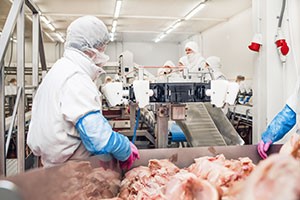Gas Detection for Meat Processing Facilities

Ammonia, carbon dioxide, and nitrogen are three gases regularly found in meat processing plants. Aside from risk of explosion and fire, leaks can cause headaches, dizziness, breathing difficulties, skin irritation, asphyxiation, and elevated heart rate in workers. To protect them, their workplace, and product quality, it’s essential for these facilities to have a reliable gas detection system in place.
Implementing a Complete System to Measure and Control Hazards
Technology advancements have improved the functionality and accuracy of gas detection systems, but have also increased their complexity in recent years. Since facility requirements differ, diligent research and careful consideration should go into how you choose to be in compliance, effectively protect workers, and prevent accidents. Here are some basics to start you on your way to implementing a robust system:
- Fixed gas detectors–these permanently installed units are essential in areas where hazardous gases are likely to be present. They continuously monitor the air and provide real-time readings and data on gas concentrations.
- Portable gas detectors–this type is carried by workers to monitor gas levels as they move about the facility. They include audible, visual, and vibrating alerts, panic alarms, and “man down” alarms for lone workers.
- Alarm systems–alert workers when gas concentrations reach unsafe levels. These alarms can be audible, visual, or both.
- Ventilation systems–remove hazardous gases from the air. They are particularly important in confined spaces such as meat rendering pits.
- Training–topics include how to use gas detection equipment, respond to gas alarms, and also how to perform necessary maintenance, bump tests, and calibration.



